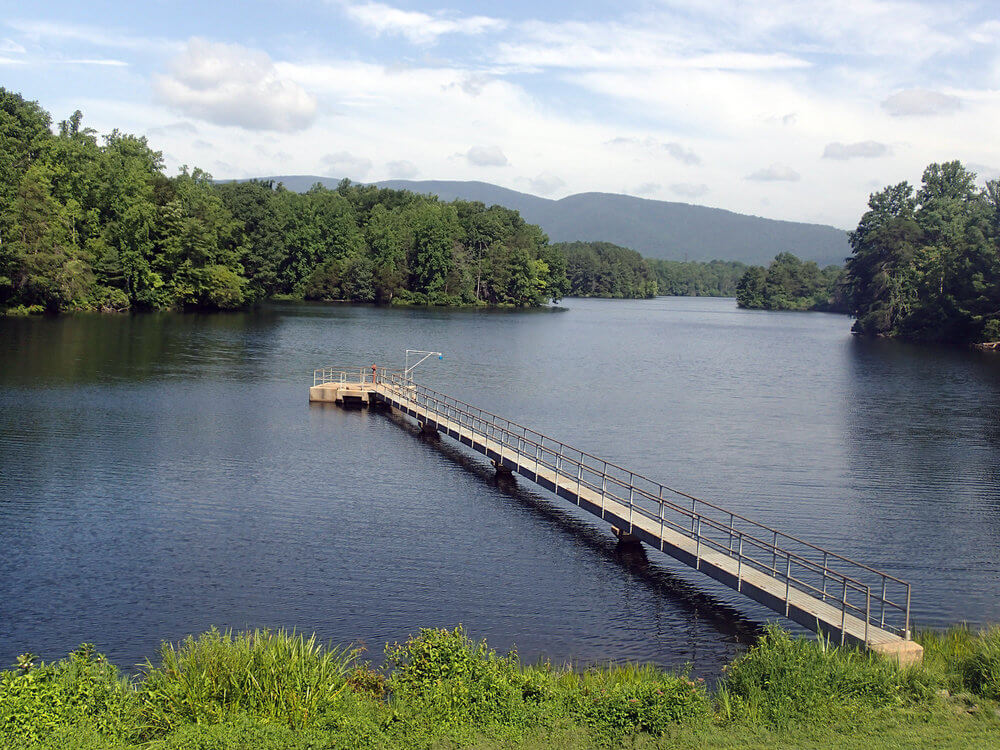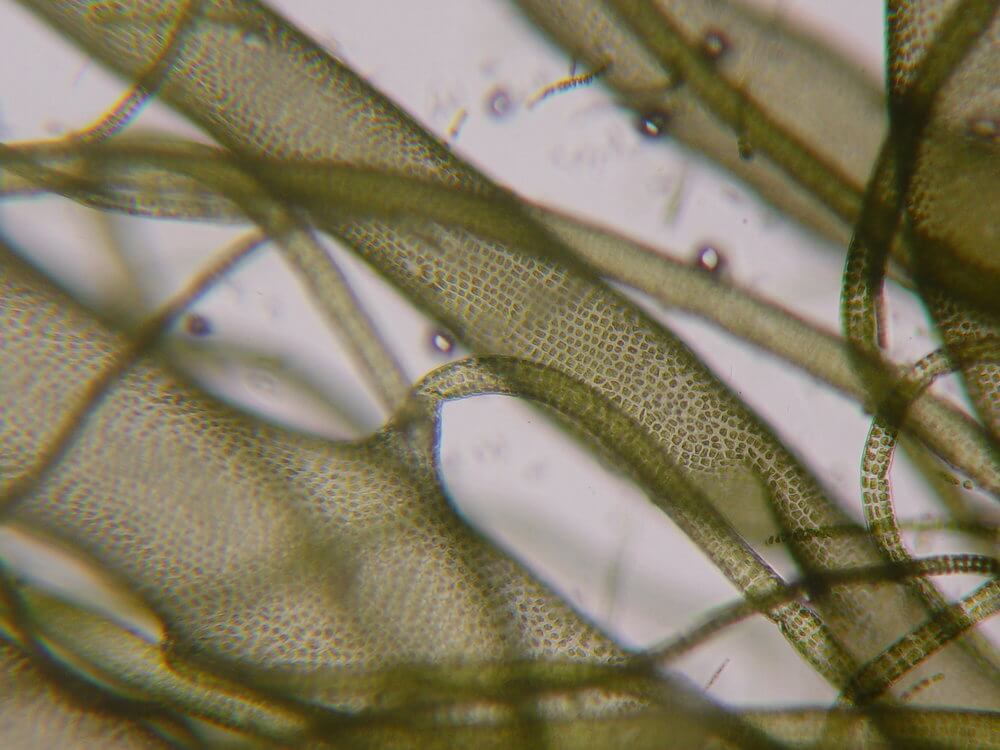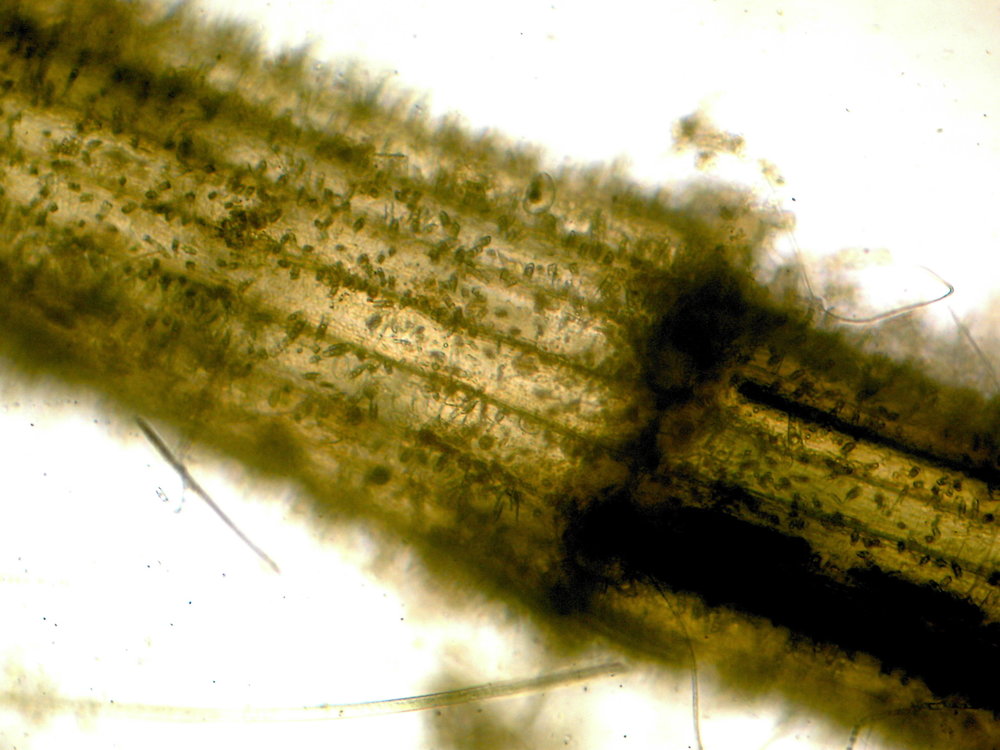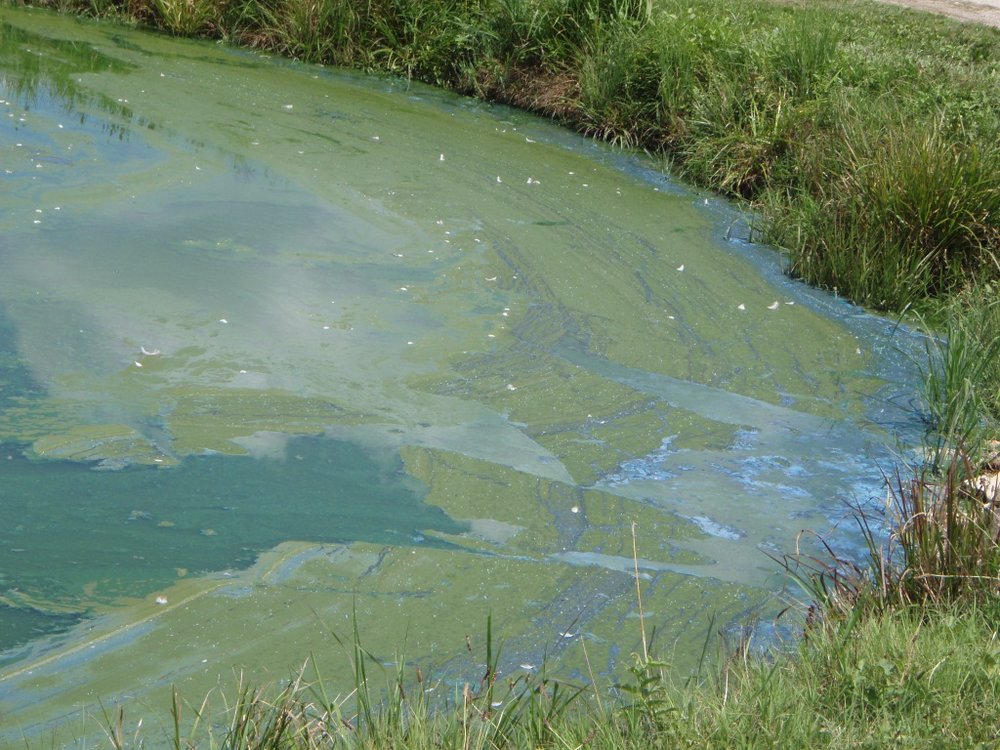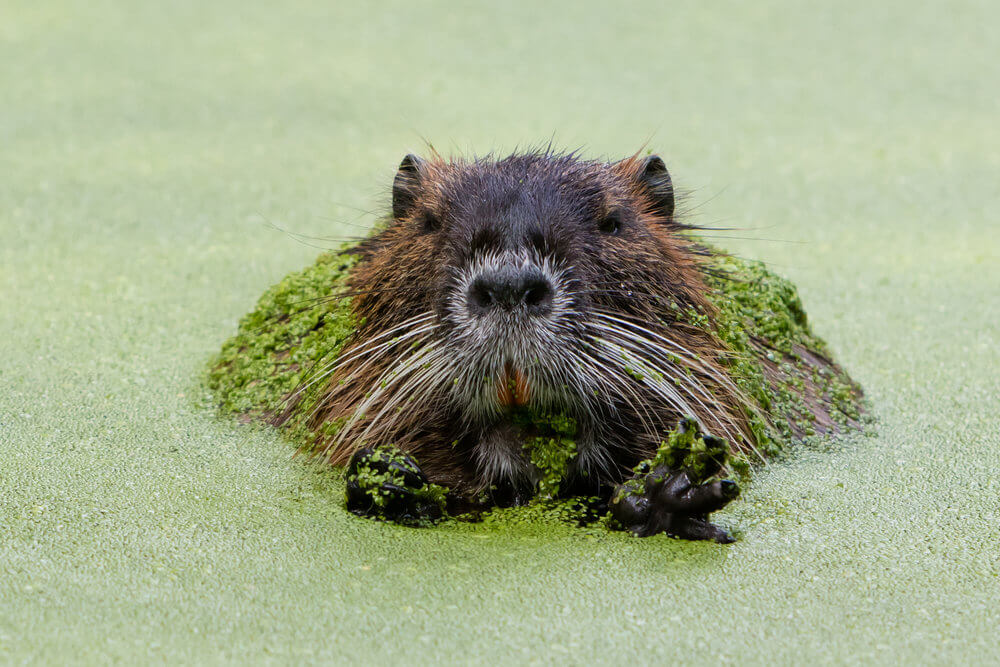Algae Corner: Toxic, Noxious, and Smelly Algae (part 2)
Today, we're going to showcase a broad overview of many different algae groups that can cause significant impacts to humans and wildlife in their environment, from golden algae and euglenoids to diatoms and raphidophytes.
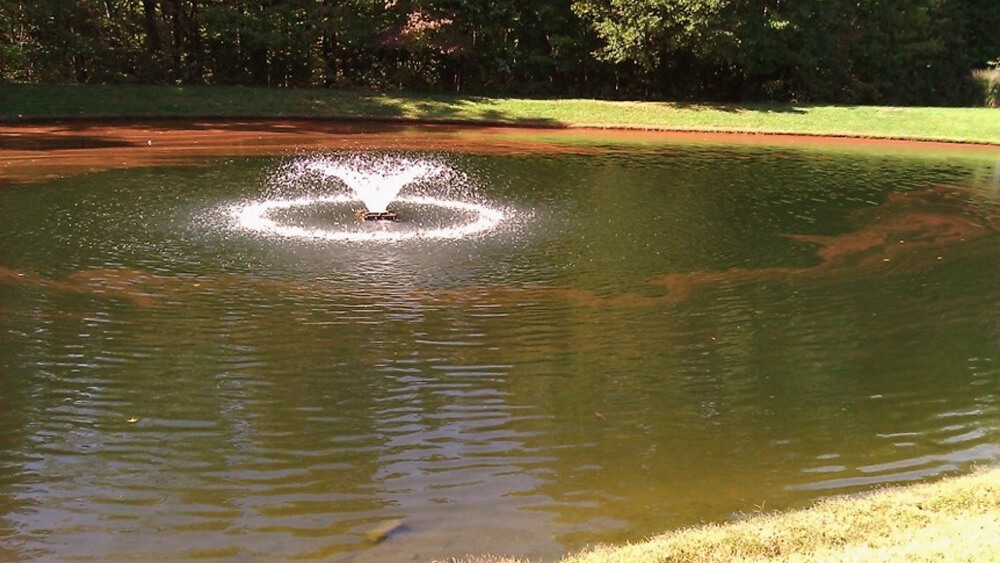
Algae Corner: Toxic, Noxious, and Smelly Algae (part 1)
Want to get Updates? Get the latest news by subscribing to our channel:
Identifying Cyanobacteria

Remember, cyanobacteria get their name because they've got this blue-green pigment called phycocyanin. This helps them with photosynthesis, but also makes them appear these different colors, blue, green, even black in color. Now, these do fall in our definition of algae. They are in that no true roots, stems, or leaves category, but they're very different than any other algae out there because they are truly a type of bacteria.
Cyanobacteria can grow in almost every habitat you can imagine, from caves to turfgrass and lawns, desert crusts, hot springs, even in the snow. It’s a very, very diverse group, and they can grow almost anywhere. However, they thrive in many surface waters throughout the country, and that's what we're going to focus on today: blooms of cyanobacteria in lakes, ponds, reservoirs, and other surface waters.
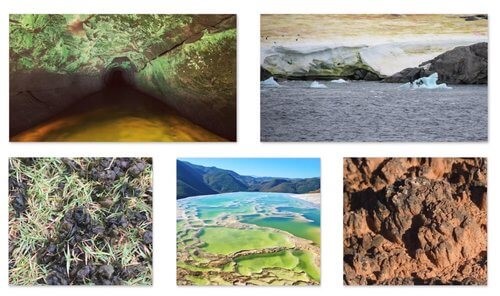
Record-Setting Growth
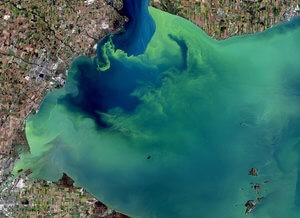
Some of the largest cyanobacteria blooms ever recorded have occurred in the recent past. Some high-profile sites that you may know of include Lake Erie, Grand Lake St. Mary’s, Discovery Bay in California, and Jordan Lake. There was even a state of emergency in Florida a couple years ago due to thick cyanobacteria infestations.
Many Forms
Cyanobacteria can be single-celled. They can also be colonial, they can be filamentous. They have many different growth forms. Many of them form large scums or mat structures in the water, but some are harder to spot. Some are distributed throughout the water column, and they can even bloom at different depths in the water. They may be 10 feet down or 20 feet down, and it could be very difficult to see or know that you have a cyanobacteria infestation in the water.
It’s very important to acknowledge that cyanobacteria have very different growth strategies and growth forms, so you know how to look for them in a water resource.
First we’ll look at this thick scum form. These scum forming blooms are pretty common, and pretty easy to identify. Many types of planktonic colonial cyanobacteria can produce these scum-forming blooms, like microcystis, aphanizomenon, and dolichospermum. They typically have a bluish or blue-green tint.
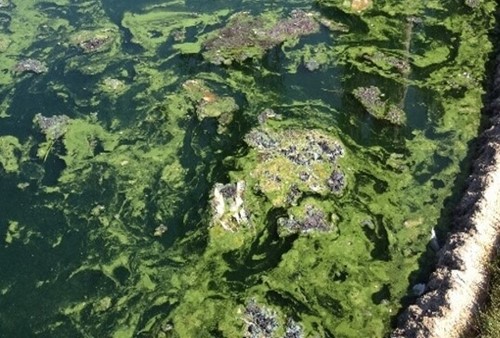
The next group that you might see out there is also fairly diagnostic. Big thick mats. These can be from lyngbya, phormidium, or tolypothrix, but these dark mats can be on the bottom of a water body or the surface of the water body. And these are also cyanobacteria infestations from thick filamentous cyanobacteria forms.
Hiding in Plain Sight
One of the most common types of cyanobacteria spreading through the country won’t necessarily form these scums or mats and they're much more difficult to identify and spot. They may just make the water appear slightly discolored, unfortunately.
These cyanobacteria include cylindrospermopsis, pseudanabaena, and planktolyngbya. They like being diluted through the water column. They grow in big reservoirs that are highly mixed.
They're much more difficult to identify as a cyanobacteria bloom because they don't necessarily form thick mats. They don't form the scums as you might typically associate with cyanobacteria infestations.
A lot of large lakes, reservoirs, and other systems that may not be good for other types of cyanobacteria can certainly grow these planktonic forms that are distributed through the water column.
Unfortunately, many people don't even know they have a problem if they have these, because there's a slight discoloration and not some of those other diagnostic growth forms.
They’re Smelly

So what's so bad about these cyanobacteria? First, they're smelly. Smelly means a lot of them can produce taste and odor compounds.
Methyl-isoborneol and geosmin are some of the common compounds they produce. These are both fishy and dirty flavored. They can make your drinking water smell bad and taste terrible to the point you can't even use it. You can't drink it, and you can't use it in cooking, because it smells so bad.
As humans, we can detect these taste and odor compounds at very low levels, around ten parts per trillion. That’s the equivalent of one second in nearly 32,000 years, as an example.
These toxins can also build up in fish. They have caused severe issues in aquaculture facilities to the tune of billions of dollars from making the fish taste and smell bad to the point that people won’t buy them.
They’re Toxic & Noxious
The next section I want to hit on is the toxic and noxious nature of the cyanobacteria. Cyanobacteria can produce a number of different compounds. Some of these are known to be highly toxic and can threaten the health of humans, wildlife, and pets.
These compounds are called toxins, which we defined in the first episode. But, again, toxins are something biologically produced by these organisms that negatively influence other organisms at common levels found in the environment.
Many types of toxins exist including neurotoxins, liver toxins, gastrointestinal toxins, and skin toxins. Cyanobacteria can produce all of these. They can impact both humans and wildlife and can cause diseases. Some of the neurotoxins can produce ALS and Alzheimer's. Liver toxins can cause liver failure and liver cancer.
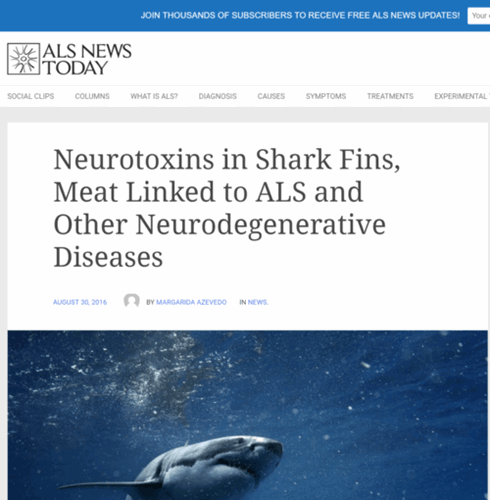
They're Bad for Wildlife & Livestock
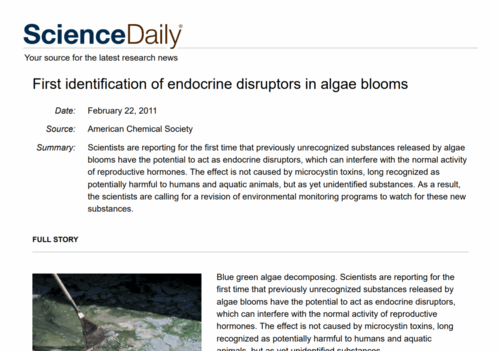
Many of these toxins have been documented to cause severe impacts to wildlife that use the water as well. The neurotoxins can move through the food chain.
There's one in particular that has caused mortalities of bald eagles and even killed a herd of wild elk. Livestock that drink out of the water are at risk. There's a lot of cyanobacteria blooms in livestock watering systems and ponds, and they can cause documented mortality of cows, pigs, sheep, and other species.
Many wildlife in or near the water can be exposed to these cyanobacteria toxins. They are not good to eat, for one, but if they are consumed, those toxins can build up in the system and cause severe impacts to the fish and invertebrates in the water column.
Some of those effects can include endocrine disruption and developmental defects in young fish.
They're Bad for Humans
Perhaps a larger concern than the wildlife are the human health impacts. Hundreds of people have been sickened from cyanobacteria blooms.
A few years ago in Toledo, Oh., the drinking water was shut down because of microcystins present in that system.
And during the state of emergency in Florida, there were many people that went to the hospital that felt nauseous and dizzy from breathing in some of these cyanobacteria toxins that can become aerosolized.
Utah Lake was the same way. Many children were getting sick from playing in the water or just being near the lake that was full of microcystins.
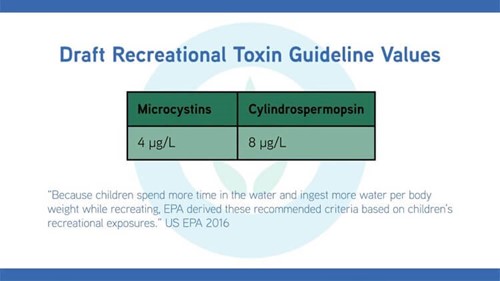
The World Health Organization and the EPA have now both published guidelines on cyanobacteria toxin. And one thing to note here is that these are just guidelines. They're not mandated levels, but there is enough information on them that these agencies have realized that it is a big concern.
The EPA actually states that children are at a higher risk, both in recreational waters and in drinking waters. You can see that very low levels of these toxins can impact humans, specifically children if present in the water.

There are also guidelines for recreational waters, which are four and eight parts per billion of these toxins. So there are low levels in both recreational exposures and extremely low levels in drinking water exposures.
The World Health Organization has also put microcystins on the possible human carcinogen list and links have been made to liver cancer and diseases from drinking water exposures. There are clusters of neurodegenerative diseases that have been described from exposures to neurotoxins like BMAA and anatoxin. ALS clusters and Alzheimer’s clusters have been identified from links with chronic cyanobacteria blooms.
Multiple Exposure Routes
We are exposed to these cyanobacterial toxins in many different ways. First, we're exposed through the food chain. Fish that have been swimming around in toxic cyanobacterial infested waters can accumulate the toxin, and we can eat those.
Another way is through the marine food web. I know these cyanobacteria are mostly fresh water, built up in fresh water systems, but sometimes these toxins are flushed down to marine environments. They can build up through fish and shellfish in the marine environment and we can be exposed to these freshwater toxins in that way as well.
There's one other food that they can build up in: irrigated crops. Crops irrigated from toxin-laden water. Cyanobacteria-infested water is often sprayed on fruits and vegetables, and those can build up toxins in the fruit. So, through the food chain, through this consumption pathway, we can be exposed to cyanobacterial toxins.

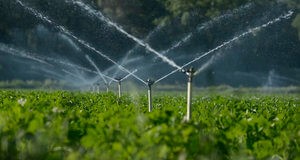
The next pathway I want to talk about is drinking water. Many of these toxins are treated in drinking water or removed from drinking water, but not all of them. Some are pretty tough, some are pretty hardy, and they make it through the drinking water process.
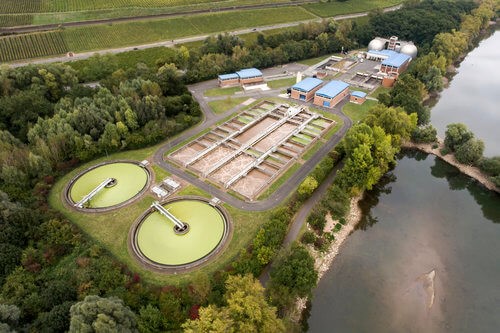
Since the concentration levels are just guidelines on toxins in drinking water, there are not necessarily mandated regulations yet. That means your drinking water plant may or may not spend the money to actually test for these toxins in the drinking water process. They can be removed in the process, but might not be depending on the processes implemented in your plant.
Another route of exposure is the inhalation route of exposure. This is where you breathe in either the toxin itself or small cyanobacteria cells that may arise out of the water column.
This is a very important route of exposure. First of all, because it can do some potent things. These neurotoxins can go straight to your brain and impact you in significant ways as a result of this inhalation exposure.
So it’s safe to say that simply shutting down the lake is not without risk. If you put up a sign to close the lake and try to stay out of it, that may offset some exposure routes.
If you limit how many fish you eat out of there and if your drinking water plant is up to par, that may limit some exposure routes, but there are a lot of people that live near cyanobacteria infested waters that are being exposed to these toxins through this inhalation exposure. Just breathing it in as it comes out of the water column. So it is very important to note that route of exposure.
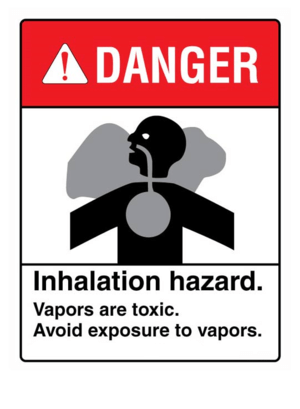
The last route of exposure that I want to mention today is the recreational water route. This occurs by directly swimming in the water body that has cyanobacteria in it.
It also could be fishing or boating or any other recreational activities in cyanobacteria-infested waters. Remember that children are highly sensitive to these cyanobacterial toxins, and allowing children to swim in there is not without risk.
One other point here is that often you see those big scums and mats and most people don't want to go swimming in those anyway, but remember there can be cyanobacteria distributed through the water column. Those small planktonic forms can be very potent and very hard to detect unless you happen to be carrying around a microscope with you.
Be Vigilant
The best way to ensure you don't get exposed to these cyanobacteria and these cyanobacteria toxins is to go after the source. Don't let those cyanobacteria grow. Don't let them exist in your water body.
Go after them before they can achieve levels that can produce toxins that would cause a concern. Keep them below threshold levels, out of your water body, so your kids can't be exposed, so they won't hurt you, and they won't hurt the wildlife.
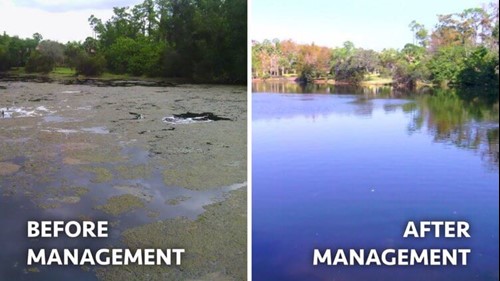
Summary
Not managing cyanobacteria is not without risks. Not without risk to you, your children, your pets, or even your grandma. So, be vigilant. Keep a close eye on your aquatic resource. Keep an eye out for those cyanobacteria and realize the threat to these toxins is real.
Stay tuned for our next episodes regarding what you can do to manage these cyanobacteria - these toxic, noxious and smelly organisms in fresh waters - before they can produce these toxins that impact you.
Knowing what you're dealing with is always the first step in a solution plan, so check out our lab service video for more information about how SePRO's lab can help.
We can help identify water quality parameters that may select for these cyanobacteria or help identify those cyanobacteria in your water sample directly.
For more information, feel free to contact us directly. Thanks for tuning in!

